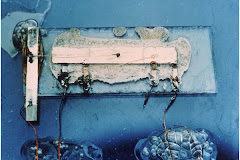VOLUME TEN (2017): ARTEFACTS
-
▼
2015
(24)
-
▼
August
(24)
- VOLUME EIGHT (2015): DIALOGUES & EXCHANGES
- * * * ARTICLES * * *
- Simon Davies: “Headless Bear News”
- Andrea Van Nort: “Shakespeare’s Nature”
- * * * REVIEWS * * *
- Cristelle Baskins: “Galileo’s Idol”
- Gayle K. Brunelle: “Renaissance Utopia”
- Kristin Bundesen: “Deborah's Daughters”
- Timothy Duffy: “Doppelgӓnger Dilemmas”
- Victoria Ehrlich: “Italian Domestic Interiors”
- Jeanette Fregulia: “Reorienting the East”
- Carole Frick: “Mad Tuscans”
- Philip Gavitt: “Rewriting Saints and Ancestors”
- Katherine A. Gillen: “Confessions of Faith”
- Elizabeth Hodgson: “Lady Hester Pulter’s Works”
- Steve Matthews: “Liturgical Subjects”
- Maureen E Mulvihill: “The Emblem in Europe”
- Laura Schechter: “The Queen’s Dumbshows”
- Colleen Seguin: “Beguines of Medieval Paris”
- Lauren Shook: “Literature and Luxury”
- Amy Stackhouse: “Anne Killigrew’s Poems”
- Larry Swain: “European Ethnography”
- Elspeth Whitney: “Making & Unmaking of a Saint”
- VOLUME EIGHT (2015): DIALOGUES & EXCHANGES
-
▼
August
(24)
Sunday, August 16, 2015
Elspeth Whitney: “Making & Unmaking of a Saint”
Elspeth Whitney
Book Review
Mathew Kuefler, The Making and Unmaking of a Saint: Hagiography
and Memory in the Cult of Gerald of Aurillac. University of Pennsylvania
Press (Philadelphia, 2014), 320 pp., 34 b/w illustrations. ISBN: 9780812245523
1>
Saints’ lives have become increasingly valued over the past several decades not
just as historical sources but also as literary texts in their own right. Mathew
Kuefler’s erudite and elegantly written study reflects the new recognition of
how saints’ lives often transcend the genre of “hagiography.” Kuefler deftly
traces the creation and varying fortunes of St. Gerald of Aurillac across a
millennium using three quite different approaches: a painstaking, textual
analysis of the early medieval vita
to determine authorship and date (Chapter one); a “textual archaeology” of
those same texts designed to elicit the personal and sometimes contradictory
meaning(s) for their authors and their times (Chapters two and three); and a
more straight-forward description of the textual and visual representations of
Gerald, often reflecting contemporary concerns, produced from the eleventh
century onwards (Chapters four through six). Also included is a useful
translation of the Vita sancti Geraldi
brevior. Running throughout the book is the theme of St. Gerald as an
emblem of sanctified violence, a concept that would have a long and disastrous
history.
2>
We know very little about Gerald the person, a nobleman who, having founded a
monastery on the site that later became the town of Aurillac in southern
France, died in the early tenth century and, within a generation, became the
first layman to be venerated as a saint. Gerald the Saint, however, became a
rich, complex and often contradictory figure celebrated into the twelfth and
thirteenth centuries and surviving, if in diminished and more generic form,
into the twentieth.
3>
Kuefler begins his study with a meticulous and important exercise in textual
scholarship in which he persuasively argues that our major hagiographical
sources for Gerald have heretofore been mistakenly dated and attributed. Since
the nineteenth century, the scholarly consensus has been that the more detailed
life of Gerald, the Vita prolixior,
was written by Odo of Cluny around 930, and a second, shorter life (the Vita brevior) was composed somewhat
later by an unknown monk. Using meticulous textual analysis and placing both
texts in their local context, Kuefler makes a convincing case that the Vita prolixior was instead most likely
forged under Odo’s name by Ademar of Chabannes, a monk at the monastery of
Limoges, probably in the 1020s and almost a full century after the Vita brevior, authentically written by
Odo. Ademar, according to Kuefler, is also the most likely author of the Miracula addita, a series of additional
miracle stories associated with Gerald. Still later but prior to the early twelfth
century, the two vita were conflated,
still under Odo’s name.
4>
Establishing Ademar’s authorship of the Vita
prolixior allows not only for a deeper understanding of Ademar and his
milieu but enables Kuefler to make a more developed case for his excavation of
the meanings of Gerald’s sanctity to his hagiographers. Gerald, as a lay
warrior, was an unlikely saint. In Kuefler’s view, his representation as a
pious nobleman who fought only defensively, resisted sex and was motivated by
love of the poor, yet never became a monk, reflected a degree of worry,
ambivalence and self-examination on the part of both Odo and Ademar that
reveals much about the competing roles of warrior and cloistered monk in the tenth
and eleventh centuries. Teasing out the subtle differences between Odo and
Ademar’s texts also allows Kuefler to make thoughtful and well-grounded (if
ultimately not provable) suggestions about the inner lives of the two
hagiographers.
5>
Odo, second abbot of Cluny, had apparently come to Aurillac in order to reform
it along Cluniac lines. Kuefler suggests that Odo found it useful to make its
founder into a saint, not only as inspiration for its monks, but to provide a
model of pious male lay Christian behavior that contrasted with the
rapaciousness of the local magnates; most pointedly, Odo describes Gerald as
never having wounded anyone in battle or been wounded himself and as making his
soldiers fight “with their spears turned around” (51). More speculatively, Kuefler
argues that Odo to some degree projected his own emotions surrounding his
personal renunciation of the noble life onto Gerald: “Odo’s presentation of
Gerald provided him with an opportunity to imagine, even momentarily, what he
had not become himself: a just layman, remaining in the world, acting piously
and nobly in the life into which he had been born” (60).
6>
Like Odo, Gerald’s second biographer Ademar became personally implicated in his
representation of the saint. But whereas Odo had expressed reservations about
whether Gerald was indeed a saint, Ademar promoted Gerald’s cult aggressively, inventing
a saintly death for him and adding numerous details, as well as a series of
impressive posthumous miracles, to his legend. Much of this added material, in
Kuefler’s view, reflected Ademar’s sensitivity to the problem of violence
committed by local lords against the peasantry and churchmen and an underlying
hostility to the military culture of the nobility. As portrayed by Ademar,
Gerald, for example, continued to order judicial mutilations and death
sentences even as he refused to be present during their execution and used
military tactics so ineffectual and “ridiculous” that his men were victorious
only because of divine intervention. Ademar’s attempt to remake Gerald into a
more realized and less violent model for lay Christian masculinity, therefore resulted
in a saint who was “a bundle of contradictions” (99), unable to fully extricate
himself from a culture of violence and reflecting Ademar’s personal struggle
with the values of his own time. Finally, Kuefler suggests (unfortunately, not
until the Conclusion) that Odo and Ademar’s ultimate “acquiescence to the
possibility of a Christian violence” (190) made Gerald one of the earliest
precedents for the merging of warfare and sanctity and a handy excuse for the
sanctified violence of the First Crusade.
7>
Subsequent chapters trace the rise and fall of devotion to St. Gerald through
the present. The medieval evidence is fragmentary but Kuefler makes the case for
a continued cult in France that spread into Catalonia through the thirteenth
century, only to dissipate in the fourteenth. An attempt to revitalize the cult
in the seventeenth century was signaled by two new biographies of Gerald, as
well as the appearance of printed versions of the Latin vita and new visual representations, occasionally showing Gerald
holding a sword or the church he had founded. Interrupted by the French
Revolution, the cult resurfaced in the nineteenth century. Not surprisingly,
Gerald’s image was utilized in the service of contemporary concerns, whether to
romanticize France’s military past or more generally to reflect a nostalgia for
the Middle Ages, dissolving finally into a “hodgepodge” of generic attributes
borrowed from other saints. Today, Kuefler sadly reports, Saint Gerald is
“virtually unknown.”
8>
The Making and Unmaking of a Saint is
an important book for the study of the early Middle Ages and (at least in the
first three chapters) a tour de force of meticulous and sensitive textual
analysis. In particular, it provides a new window on the interpenetration of
noble and monastic culture in southern France in the tenth and eleventh
centuries and suggests fruitful connections between the monastic movement, the
religious critique of violence and, ultimately, the Church’s accommodation to,
or even exploitation of, a violent culture. Although it has less to say about
the early modern period, it will be welcomed by specialists in the history and
culture of the early Middle Ages, as well as scholars more generally interested
in hagiography as a literary and historical genre.
_____
Elspeth Whitney is Associate Professor of
History at the University of Nevada, Las Vegas. She publishes in the areas of
medieval sexuality and medieval technology. She is currently working on a
project on gender, the complexions and sexual types in the Middle Ages.
_____
APPOSITIONS:
Studies
in Renaissance / Early Modern Literature and Culture,
http://appositions.blogspot.com/,
ISSN: 1946-1992,
Volume
Eight (2015): Dialogues & Exchanges
_____
Subscribe to:
Post Comments (Atom)













No comments:
Post a Comment